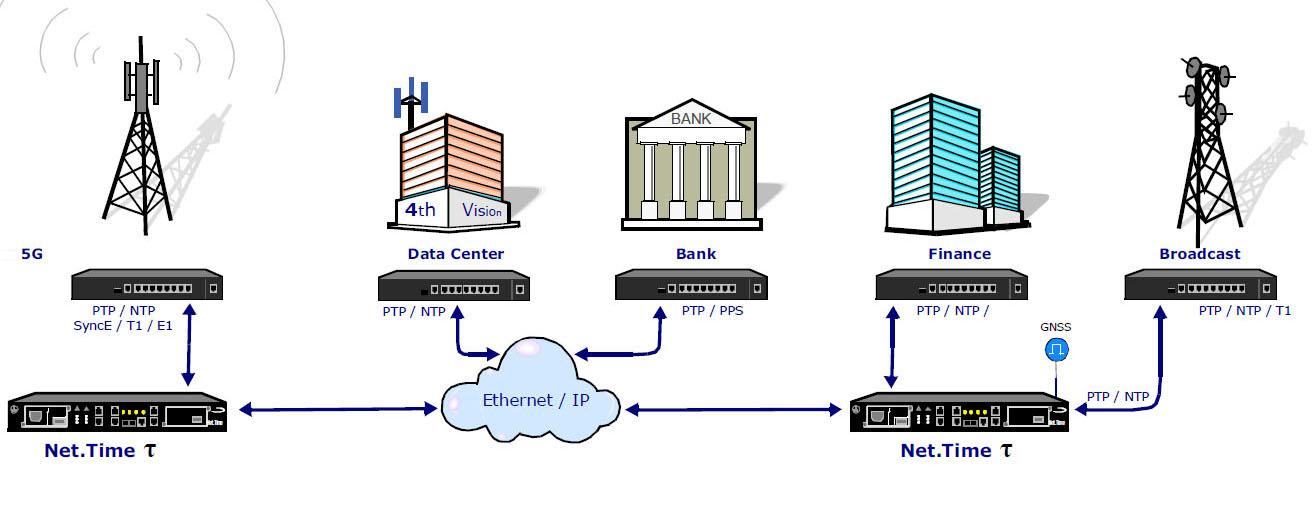Net.Time: Multi-band GNSS support
Net.Time can now access the L1 and L5 GNSS bands for signal tracking. This feature has key benefits including improved accuracy, better resilience, redundancy and anti-jamming and anti-spoofing strategies.
ANWERP OCT/31/2023
Net.Time supports multi-band GNSS
Net.Time is the family of network clocks that represent the state of the art in timing, designed to provide the most accurate and secure timing for industrial applications such as data centres, air traffic control or the power grid. This clock is tolerant to power, network and synchronisation failures and can be equipped with different output modules to meet the requirements and facilitate the integration of any type of signal, making it ideal for heterogeneous applications.

Fig 1. Net.Time family of PTP/NTP Network Clocks.
Multi-band GNSS
Multi-band GNSS systems use several frequency bands, in the case of Net.Time L1 and L5, and have a number of important advantages:
- Improved reception: Net.Time now has improved multi-path mitigation capabilities as it can distinguish between direct signals from satellites and reflected signals.
- Faster convergence: Net.Time can be disciplined faster, improving reacquisition time after signal loss, which is critical for maintaining clock synchronisation in mission-critical applications.
- Enhanced accuracy: Net.Time can provide more accurate timing information by mitigating common errors and atmospheric effects, enabling better error correction and reducing the effects of ionospheric delay and multipath interference.
- Time redundancy: Net.Time can continue to manage if one band experiences degradation, the receiver can still rely on the other band to maintain timing accuracy.
- Interference resistance: Net.Time is now less susceptible to jamming and spoofing because it can detect signals that don’t match the expected GNSS information.
- NAVIC support: Net.Time can now receive NAVIC (NAVigation Indian Constellation), a regional satellite navigation system owned by the Indian government.
The choice between multi-band and single-band GNSS for network clock synchronisation depends on the specific requirements of the application and the budget available. For critical applications where high precision, accuracy and reliability are essential, multi-band GNSS is often the preferred choice.

Fig 2. Net.Time a clock for Telecom, Data Centers, Finance and Broadcasting.
Jamming & Spoofing
Of particular interest for a network clock is its resilience to jamming and spoofing, as these have serious consequences. The risk often depends on the motivation of the potential attacker which basically means that critical infrastructure, defence, mobile networks, airports, financial institutions may be more attractive targets. Organisations can prioritise security by implementing measures to mitigate these risks, and the use of multi-band GNSS receivers is one of the most popular, with signal authentication and anti-jamming features to make it more difficult for attackers.
It’s important to be aware of the potential risks and take appropriate precautions to mitigate them. In critical applications such as power utilities and airports, redundant timing sources such as atomic clocks or terrestrial time references may also be used to provide backup timing in the event of GNSS interference, as these attacks can have a significant impact on the performance and security of other systems that rely on the accurate timing provided by Net.Time PTP/NTP/IRIG-B clocks.



